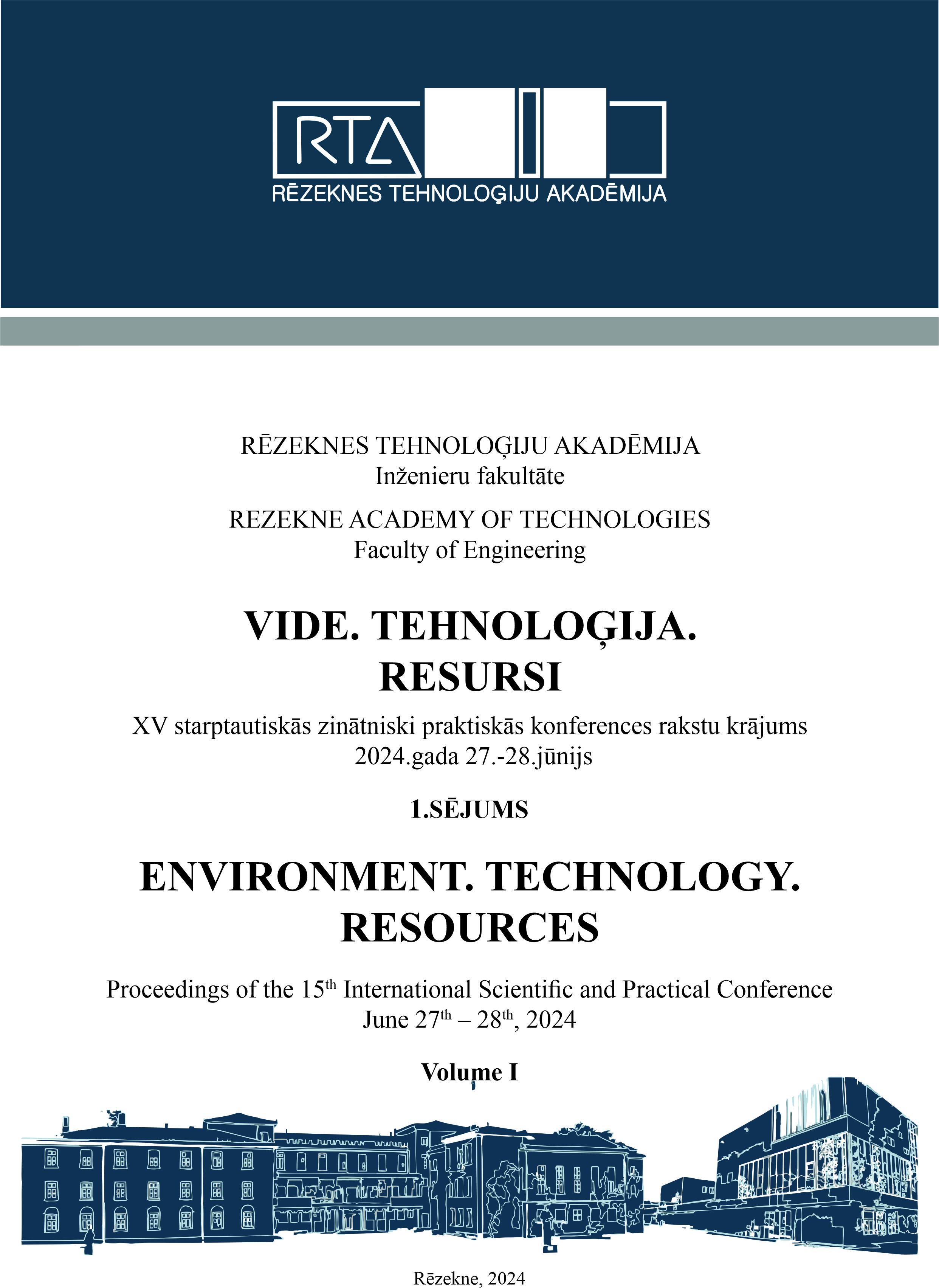EXAMINATION OF THE VARIATION OF MTA POWER WHEN WORKING WITH OIL ANAMEGATORS
DOI:
https://doi.org/10.17770/etr2024vol1.8003Keywords:
anamegators, additives, power, engines, energotestAbstract
One of the main indicators of internal combustion engines, tractors and the machine-tractor unit as a whole it's the power. It can change in the process of operation and there comes a time when subsequent use is inadmissible or inexpedient. In such a state, it is appropriate to apply technology to improve this indicator and reduce the fuel or lubricant consumption.
The power parameter of an agricultural power machine is essential to achieve high productivity with low operating costs with minimal environmental pollution. The monitoring of changing the power is generally carried out by equipment unbearable and unnecessary for the farmer. The possibility for determining the power of the tractor fitted with the working machine by means of a standard brake performance device is a suitable option for monitoring the technical condition of the machinery. In this way, timely detection of defects and prevention of serious consequences for the engine.
Worldwide, various technological options have been developed to improve the power of engines without the need for their disassembly. One of these technological options is the fitting of anamegators (additives) in very small quantities to the engine lubricant oil.
In this article is made the experiments to evaluating of the variation of the power performance of a diesel tractor engine treated with anamegators as part of a machine-tractor unit. The acceleration and speed of the machine-tractor unit is recorded through a specialized device ENERGOTEST SM4. On this basis of the experimental results obtained, the driving force and power of the tractor from the machine-tractor unit has been determined by theoretical relationships.
References
J. Dyer and R. Desjardins. Simulated Farm Fieldwork, Energy Consumption and Related Greenhouse Gas Emissions in Canada. Biosystems Engineering 2003; vol.85, Issue 4, pp. 503-513, 2003.
https://doi.org/10.1016/S1537-5110(03)00072-2
J. Dyer and R. Desjardins. Carbon Dioxide Emissions Associated with the Manufacturing of Tractors and Farm Machinery in Canada. Biosystems Engineering, vol. 93, Issue 1, pp.107-118, 2006. https://doi.org/10.1016/j.biosystemseng.2005.09.011
A. Kheiralla, Y. Azmi, M. Zohadie and W. Ishak. Modelling of power and energy requirements for tillage implements operating in Serdang sandy clay loam. Soil and Tillage Research, vol. 78, Issue 1, pp.21-34, Malaysia, 2004.
H. Sogaard and C. Sorensen. A Model for Optimal Selection of achinery Sizes within the Farm Machinery System. Biosystems Engineering, vol. 89, Issue 1, pp.13-28, 2004. https://doi.org/10.1016/j.biosystemseng.2004.05.004
A. Koniuszy, P. Kostencki, A. Berger and W. Golimowski. Power performance of farm tractor in field operations. Eksploatacja i Niezawodnosc - Maintenance and Reliability. 19, pp. 43-47, 2017.
J. Serrano. Performance of agricultural tractors in traction. Pesquisa Agropecuária Brasileira, 42, p.1021–1027, 2007.
A. Russini, J. Fernando and M. Farias. Estimation of the traction power of agricultural tractors from dynamometric tests. RURAL ENGINEERING, Cienc.Rural 48(04), 2018. https://doi.org/10.1590/0103-8478cr20170532
R. Smigins, K. Sondors, V. Pirs, I. Dukulis and G. Birzietis. Studies of Engine Performance and Emissions at Full-Load Mode Using HVO, Diesel Fuel, and HVO5. Energies, 16, 4785, 2023. https://doi.org/10.3390/en16124785
Y. Wang, L. Wang, J. Zong, D. Lv and S. Wang. Research on Loading Method of Tractor PTO Based on Dynamic Load Spectrum. Agriculture, 11, 982, 2021. https://doi.org/10.3390/agriculture11100982
M. Pexa, M. Cindr, K. Kubín and V. Jurča. Measurements of tractor power parameters using GPS. Research in Agricultural Engineering, 57 (1), p. 1–7, 2011. DOI: 10.17221/18/2010-RAE
V. Kumbár and P. Dostál. Oil additive and its effect. Acta Universitatis Agriculturae et Silviculturae Mendelianae Brunensis, LXI, No. 3, pp. 691-697, 2013.
G. Komitov and D. Kehayov. Comparative research of diesel engine at working with anamegators. International conference Power transmission BAPT, Web of conference 287, 05002. pp. 1-4, 2019. https://doi.org/10.1051/matecconf/201928705002
Adios. Osobenosti masleni anamegatori Gold Ozirol
MP-8, Kiev, Ukraine. http://www.adioz.com.ua [Accessed: March 1, 2024].
New Holland. T6 – T6.120| T6.140| T6.150| T6.160| T6.155| T6.165|T6.175 Product catalog TP01, 120003/DOO, Turin, Italy, 2012.
New Holland. Farming technology of tomorrow Product catalog. TP01, AP6708N/INB, Turin, Italy, 2016.
Energotest. Energo-SM 4.0 – Technical leaflet. Dunaharaszti, Hungary, 2020.
S. Devonshire, J. Evans and A. Douglass A. Report on test accordance with the OECD Standart Code II for the Official Testing of Agricultural and Forestry Tractors. New Holland, Silsoe Research Institute, OECD/7592/0198, Bedford, UK, 1998.
Downloads
Published
Issue
Section
License
Copyright (c) 2024 Evgeni Kehayov, Ivan Mitkov, Georgi Komitov

This work is licensed under a Creative Commons Attribution 4.0 International License.



